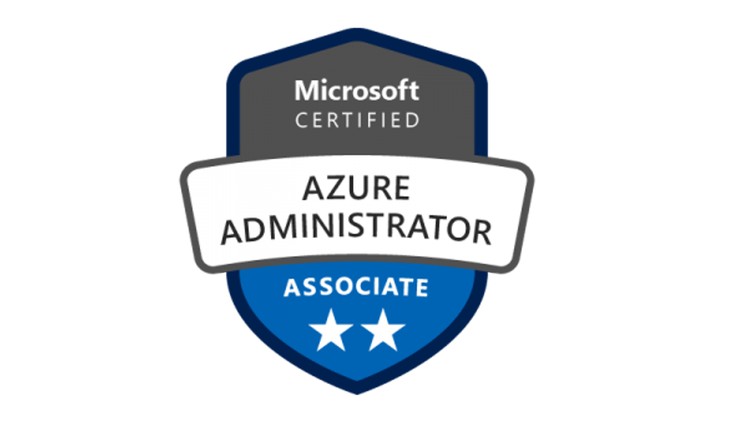Microsoft Azure AZ-103
Redprism came a long way intending to ‘Transform the Career and Lives’ of the individuals in the competitive world and up skilling their career, and creating a balance between the learning and implementing the real-time cases in education and achieve the dreams.

Microsoft Azure AZ-103
What is MS Azure?
Microsoft Azure, commonly referred to as Azure, is a cloud computing service created by Microsoft for building, testing, deploying, and managing applications and services through Microsoft-managed data centers. It provides software as a service (SaaS), platform as a service (PaaS) and infrastructure as a service (IaaS) and supports many different programming languages, tools, and frameworks, including both Microsoft-specific and third-party software and systems
Why Azure?
The opportunities for Microsoft Azure specialists have drastically multiplied in recent years, owing to the growing demand:
- As per reports from Microsoft, over 1,000 new customers sign up to Azure daily. That’s 365,000 new companies adopting MS Azure every year!
- MS Azure is being used by over 57% of Fortune 500 companies.
- Through Azure, Microsoft’s commercial cloud revenue has increased by 104%, with an annual run rate of $6.3 billion in revenue.
- Microsoft Azure has received official accreditation from the UK government.
- There is even a Microsoft Azure Government offering, backed by the US Government.
Azure Course Objective:-
· Describe Azure architecture components, the infrastructure, tools, and portals.
· Implement virtual networking in Microsoft Azure and configure cross-premise connectivity.
· Plan and develop Azure Virtual Machines.
· Configure, manage, and monitor Azure VM (Virtual Machines) to optimize availability and reliability.
· Implement Azure App Service.
· Plan and implement storage and backup, and recovery services.
· Implement container-based workloads in Azure.
· Deploy, configure, monitor, and diagnose cloud services.
· Implement Azure AD.
· Manage an AD(Active Directory) infrastructure in a hybrid environment.
· Automate operations by using Azure Automation run books.
Exclusive Key factors at Redprism
Redprism is a best training center for Azure given corporate trainings to different reputed companies. In Azure training all sessions are teaching with examples and with real time scenarios. We are helping in real time how approach job market, Resume preparation, Interview point of preparation, how to solve problem in projects in job environment, information about job market etc. We are providing classroom Training in Noida and online from anywhere. We provide all recordings for classes, materials, sample resumes, and other important stuff. Azure Online Training We provide Azure (Admin, Architect) online training through worldwide like India, USA, Japan, UK, etc. Redprism is the best institute in Noida for Microsoft Azure.
Prime Features why to Join Red Prism?:-
· Industry Expert Trainers with 10-15 years of experience.
· Course content is curated by best Subject Matter Experts.
· Practical Assignments.
· Real Time Projects.
· Video recording of each and every session.
· Yours doubts are clarified with 24*7 assistance by our experts.
· We conduct regular Mock tests and certifications at the end of course.
· Certification Guidance.
· Recognized training complete certificate.
· 100% Placement Assistance.
· Less fees as compared to other institutes.
· Flexi payment options
· Scholarship Available
Course Content:-
- Cloud technology overview.
- Overview of Azure.
- Why to choose Microsoft Azure.
- Managing Azure with the Azure portal.
- Managing Azure with Windows PowerShell.
- Overview of Azure Resource Manager.
- Features of Azure Resource Manager.
- Understand about multiple management native tools.
- Different Azure deployment models.
- Create and configure storage accounts
§ Configure network access to the storage account
§ Create and configure storage account
§ Generate shared access signature
§ Install and use Azure Storage Explorer
§ Manage access keys
§ Monitor activity log by using Log Analytics
§ Implement Azure storage replication
- Import and export data to Azure
§ Create export from Azure job
§ Create import into Azure job
§ Use Azure Data Box
§ Configure and use Azure blob storage
§ Configure Azure content delivery network (CDN) endpoints
- Configure Azure files
§ Create Azure file share
§ Create Azure File Sync service
§ Create Azure sync group
§ Troubleshoot Azure File Sync
- Implement Azure backup
§ Configure and review backup reports
§ Perform backup operation
§ Create Recovery Services Vault
§ Create and configure backup policy
§ Perform a restore operation
- Create and configure a VM for Windows and Linux
§ Configure high availability
§ configure monitoring, networking, storage, and virtual machine size;/li>
§ deploy and configure scale sets
- Automate deployment of VMs
§ Modify Azure Resource Manager (ARM) template;
§ configure location of new VMs;
§ configure VHD template;
§ deploy from template;
§ save a deployment as an ARM template;
§ deploy Windows and Linux VMs
- Manage Azure VM
§ Add data discs;
§ Add network interfaces
§ Automate configuration management by using PowerShell Desired State Configuration (DSC) and VM Agent by using custom script extensions;
§ Manage VM sizes; move VMs from one resource group to another;
§ Redeploy VMs
- Manage VM backups
§ Configure VM backup;
§ Define backup policies;
§ Implement backup policies;
§ perform VM restore
§ Azure Site Recovery
- Create connectivity between virtual networks
§ Create and configure VNET peering
§ create and configure VNET to VNET
§ verify virtual network connectivity
§ create virtual network gateway
- Implement and manage virtual networking
§ Configure private and public IP addresses, network routes, network interface, subnets, and virtual network
- Configure name resolution
§ Configure Azure DNS
§ configure custom DNS settings
§ Configure private and public DNS zones
- Create and configure a Network Security Group (NSG)
§ Create security rules
§ Associate NSG to a subnet or network interface
§ Identify required ports
§ Evaluate effective security rules
- Implement Azure load balancer
§ Configure internal load balancer, configure load balancing rules, configure public load balancer, and troubleshoot load balancing
- Monitor and troubleshoot virtual networking
§ Monitor on-premises connectivity, use Network resource monitoring, use Network Watcher, troubleshoot external networking, and troubleshoot virtual network connectivity
- Create and configure Integrate on premises network with Azure virtual network
§ Azure VPN Gateway, create and configure site to site VPN, configure Express Route, verify on premises connectivity, troubleshoot on premises connectivity with Azure
- Managing Azure Subscriptions.
- Access Management for Cloud Resources.
- Monitoring and Diagnostics about Azure Resources.
- Pricing & Billing.
- Azure Roles & access considerations.
- Built-in roles Vs custom/default roles.
- Managing Azure Active Directory
- Managing Azure Active Directory Objects
- Azure AD default & custom domain
- Implementing and Managing Hybrid Identities
- Introduction to Identity Protection in Azure
- Using Multi-Factor Authentication for Secure Access
- Azure AD Connect
- Azure AD Basic & Premium Editions
- Multiple options to using AD.






